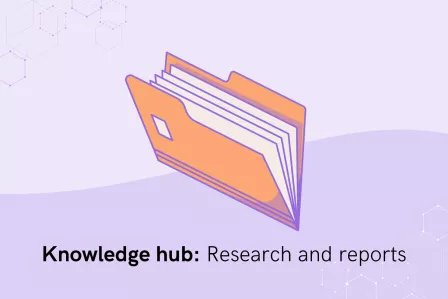In this partial report, data from the Parents and Media, and Children and Media surveys in 2024 are presented, which shed light on how parents with children between 1-17 years of age view the regulation of their children's media use, and then explain how children aged 9-18 respond to questions about their parents' regulation of their media use.
(Source: Norwegian Media Authority).
Main findings include:
- One in three parents agree that it is difficult to keep track of what the child is doing online. Half believe that they have the information they need to be able to guide the child on media use.
- Among the younger children, the parents have a good overview of their children's media use and feel to a large extent that they can guide the children. When the child reaches the age of 13–14, a change occurs. There are then more parents who find it difficult to keep track of what their child is doing online than there are who think they have the information they need to be able to guide their child. In this age group, the parents' degree of involvement in the child's digital activities is around 50 per cent.
- Three out of ten believe that the child spends too much time on social media, YouTube and computer games. Two out of ten believe that time spent on TV or streaming services is too high.
- There has been an increase in the use of parental control functions compared to 2022 (an increase of between five and ten percentage points for the various control functions). Around half of parents use features that limit their children's downloading and use of apps, spending money related to games or apps, and restrictions on TV or streaming services.
- Overall, three out of ten parents use tracking services to know where their child is.
(Source: report).
Methodology
Data collection for Parents and the Media has been done among parents with children aged 1-17 years. 2,545 parents have been interviewed. The results are weighted on the children's age against the age distribution among children in the population.
The data collection for Barn og Medier has been done at 122 different schools spread across the country. 3,212 children aged 9-18 have taken part in the survey. The results are weighted by gender, school level and municipality size to equalize sample biases.
Country or region of researched population
Norway
Citation
Parental regulation of children’s media use. (2024). The Norwegian Media Authority/Verian. https://www.medietilsynet.no/fakta/rapporter/barn-og-medier/foreldreregulering-barns-mediebruk/
Record created:
01 August 2024
In this partial report, data from the Parents and Media, and Children and Media surveys in 2024 are presented, which shed light on how parents with children between 1-17 years of age view the regulation of their children's media use, and then explain how children aged 9-18 respond to questions about their parents' regulation of their media use.
(Source: Norwegian Media Authority).
Main findings include:
- One in three parents agree that it is difficult to keep track of what the child is doing online. Half believe that they have the information they need to be able to guide the child on media use.
- Among the younger children, the parents have a good overview of their children's media use and feel to a large extent that they can guide the children. When the child reaches the age of 13–14, a change occurs. There are then more parents who find it difficult to keep track of what their child is doing online than there are who think they have the information they need to be able to guide their child. In this age group, the parents' degree of involvement in the child's digital activities is around 50 per cent.
- Three out of ten believe that the child spends too much time on social media, YouTube and computer games. Two out of ten believe that time spent on TV or streaming services is too high.
- There has been an increase in the use of parental control functions compared to 2022 (an increase of between five and ten percentage points for the various control functions). Around half of parents use features that limit their children's downloading and use of apps, spending money related to games or apps, and restrictions on TV or streaming services.
- Overall, three out of ten parents use tracking services to know where their child is.
(Source: report).
Methodology
Data collection for Parents and the Media has been done among parents with children aged 1-17 years. 2,545 parents have been interviewed. The results are weighted on the children's age against the age distribution among children in the population.
The data collection for Barn og Medier has been done at 122 different schools spread across the country. 3,212 children aged 9-18 have taken part in the survey. The results are weighted by gender, school level and municipality size to equalize sample biases.
Country or region of researched population
Norway
Citation
Parental regulation of children’s media use. (2024). The Norwegian Media Authority/Verian. https://www.medietilsynet.no/fakta/rapporter/barn-og-medier/foreldreregulering-barns-mediebruk/
Record created:
01 August 2024- parental control parental control tools screen time


